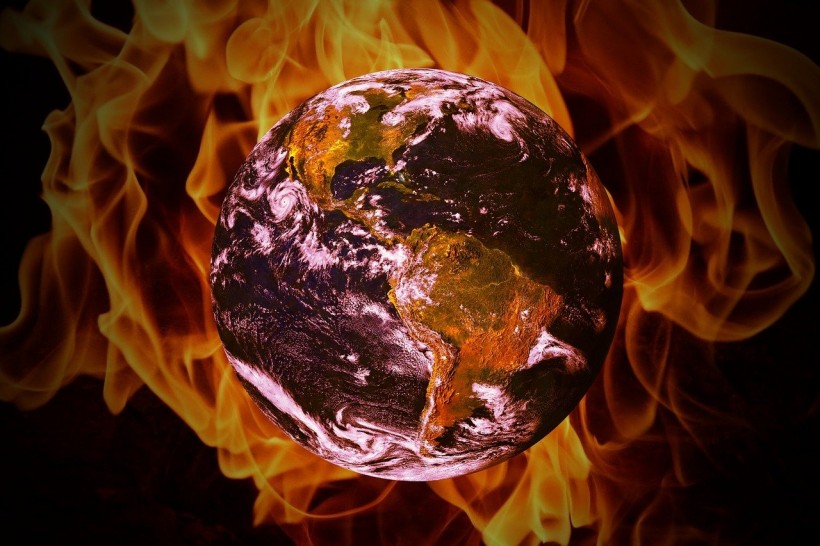A 1°C global temperature increase risks extreme heat and humidity, hindering natural cooling, according to interdisciplinary research. Exceeding 1.5°C preindustrial levels will severely impact human health, as bodies can't tolerate excessive heat and humidity.
Global temperatures have already risen about 1°C since the Industrial Revolution due to fossil fuel usage. The Paris Agreement aims to cap temperature increases at 1.5°C above pre-industrial levels, highlighting the urgency of addressing climate change.

1°C Temperature Rise Puts Billions at Risk of Deadly Heat and Humidity Beyond Human Tolerance, Study Warns
Worsening Global Warming Exceeding Human Tolerance
A new study found that the wet-bulb temperature limit for young, healthy individuals is approximately 31°C (87.8°F) at 100% humidity. This threshold depends on various factors, including exertion level, wind speed, and solar radiation. Historically, conditions exceeding human tolerance have been rare, occurring briefly in the Middle East and Southeast Asia.
If global temperatures rise by 2°C above pre-industrial levels, regions like the Indus River Valley, eastern China, and sub-Saharan Africa will annually experience extended periods of heat surpassing human tolerance. These areas will mainly face high-humidity heatwaves, which can be especially dangerous due to limited sweat evaporation and inadequate cooling infrastructure.
With a 3°C temperature increase above pre-industrial levels, the Eastern Seaboard and the central United States, along with South America and Australia, would also encounter extreme heat and humidity exceeding human limits. Although the United States is expected to experience more heatwaves, it may not reach these limits as frequently as other regions.
However, the researchers cautioned that such models might not account for exceptionally severe weather events. They emphasized that continued warming could lead to agricultural failures and mass migrations due to uninhabitable native regions.
The team conducted 462 experiments on heat, humidity, and exertion's impact on human tolerance, revealing that the body's cooling mechanisms can be overwhelmed at certain levels.
In 2022, they found human heat and humidity tolerance limits were lower than previously believed. Collaborating with climate researcher Matthew Huber, they emphasized the greater threat posed by humid heat, urging policymakers to reevaluate mitigation strategies due to the potential 3°C temperature increase by 2100 if no action is taken.
READ ALSO: How To Survive Heat Wave Without Air Conditioning? Here Are Some Tips To Cool During Extreme Temperatures\
Health Risks and Inequality Amid Global Warming
The researchers underscore the ongoing importance of monitoring extreme heat and humidity, even when individuals appear to be within established human tolerance limits. Recent studies suggest that older adults are more vulnerable to heat stress and its health impacts at lower heat and humidity levels compared to younger individuals.
Moreso, it is noteworthy that extreme heat is already the leading cause of weather-related fatalities in the United States, underscoring the need for proactive care, particularly for vulnerable populations such as the elderly and those with pre-existing health conditions during heatwaves.
While the research primarily focuses on core body temperature, it acknowledges that during heatwaves, individuals face health challenges stemming from various factors.
For instance, during the 1995 Chicago heatwave, a significant proportion of the 739 fatalities were individuals over the age of 65 who experienced a combination of elevated body temperature and cardiovascular issues, ultimately resulting in heart attacks and other cardiovascular-related causes of death.
Urgent greenhouse gas emission reductions, particularly in carbon dioxide from fossil fuels, are essential to combat the severe consequences of rising temperatures. Without action, middle-income and low-income countries, exemplified by Al Hudaydah, Yemen, facing 4°C temperature increases, risk rendering their cities uninhabitable for over 300 days annually.
This underscores the interconnected global implications of extreme heat, with research backed by grants from the National Institute on Aging, NASA, and the National Science Foundation.
RELATED ARTICLE: How Hot Can the Human Body Take? Examining Supercharged Heat Waves and Their Dangerous Impact on Daily Activities
Check out more news and information on Global Warming in Science Times.














